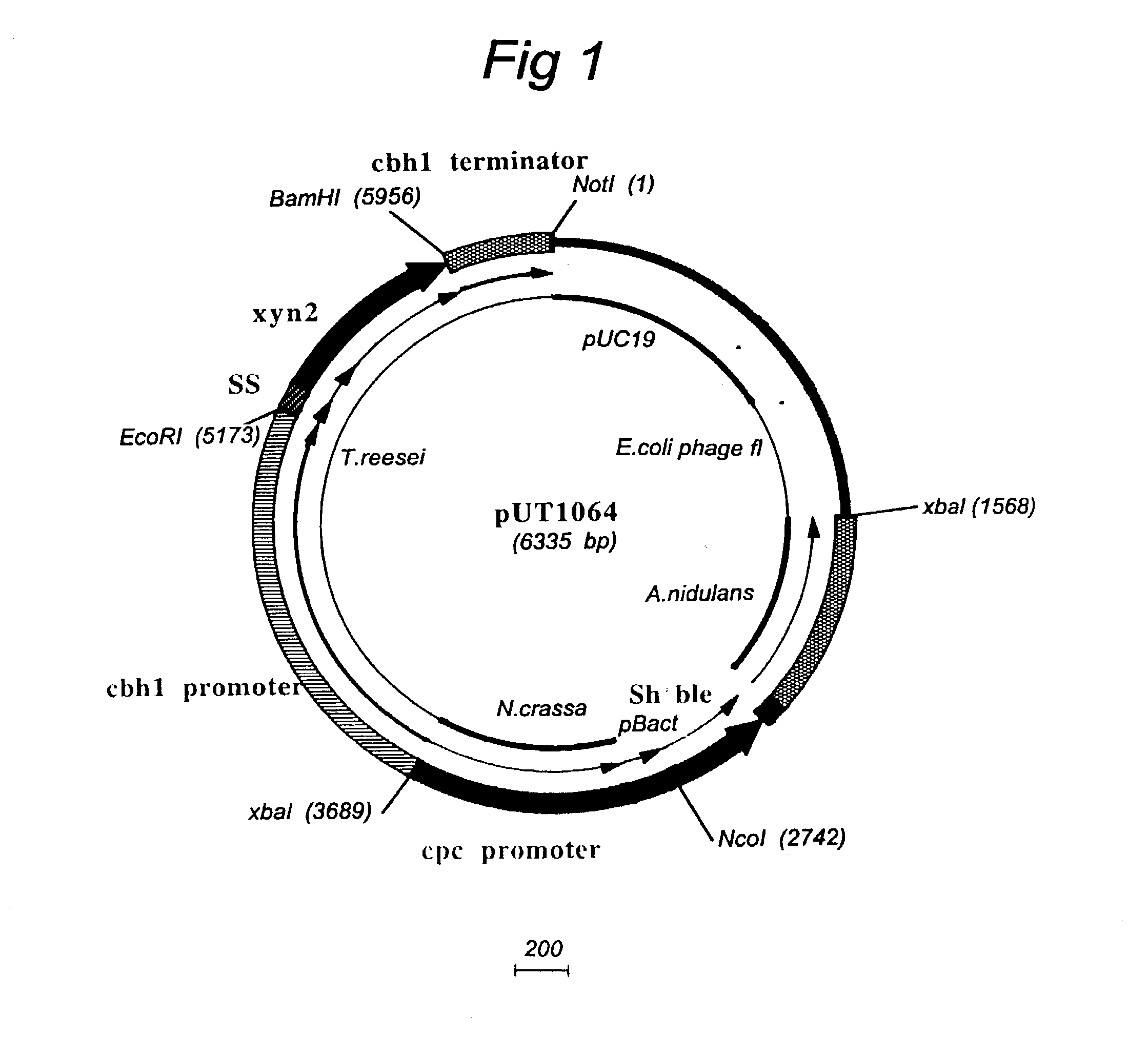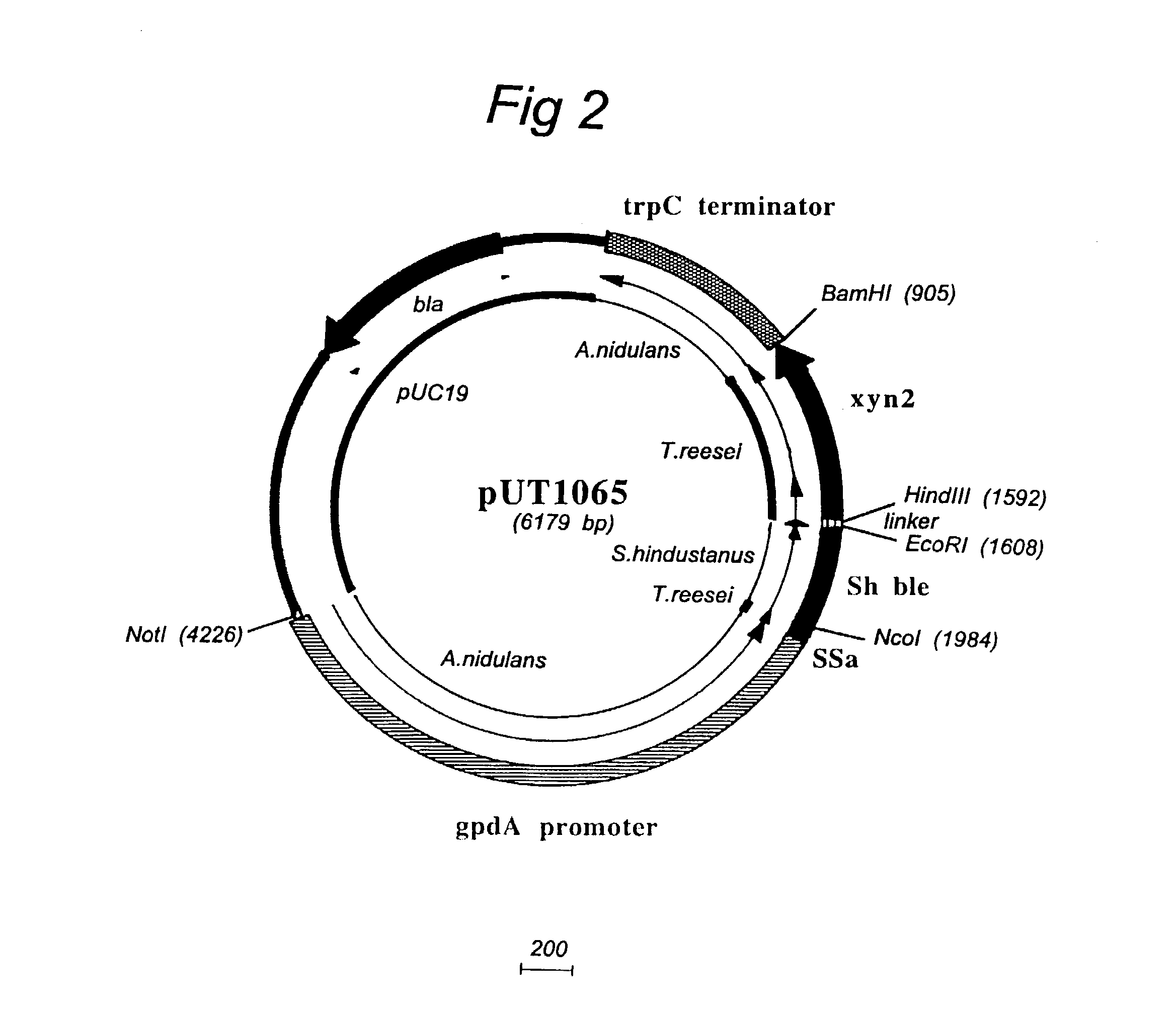Novel expression-regulating sequences and expression products in the field of filamentous fungi
a technology of expression regulation sequences and expression products, applied in microorganisms, organic chemistry, enzymology, etc., can solve the problems of difficult maintenance and expensive media, inability of prokaryotes to provide additional modifications required for the production of numerous eukaryotic proteins or polypeptides in an active form, and inability to provide additional modifications for the production of proteins or polypeptides
- Summary
- Abstract
- Description
- Claims
- Application Information
AI Technical Summary
Benefits of technology
Problems solved by technology
Method used
Image
Examples
Embodiment Construction
Examples of Transformation Comparing Chrysosporium, Trichoderma and Tolypocladium Geodes
[0080] Two untransformed Chrysosporium C1 strains and one Trichoderma reesei reference strain were tested on two media (Gs pH 6,8 and Pridham agar, PA, pH 6,8). To test the antibiotic resistance level spores were collected from 7 day old PDA plates. Selective plates were incubated at 32.degree. C. and scored after 2,4 and 5 days. It followed that the C-1 strains NG7C-19 and UV18-25 clearly have a low basal resistance level both to phleomycin and hygromycin. This level is comparable to that for a reference T. reesei commonly used laboratory strain. Thus there is clear indication these two standard fungal selectable markers can be used well in Chrysosporium strains. Problems with other standard fungal selectable markers should not be expected.
[0081] Selection of Sh-ble (phleomycin-resistance) transformed Chrysosporium strains was succesfully carried out at 50 .mu.g / ml. This was also the selection l...
PUM
| Property | Measurement | Unit |
|---|---|---|
| Fraction | aaaaa | aaaaa |
| Fraction | aaaaa | aaaaa |
| Fraction | aaaaa | aaaaa |
Abstract
Description
Claims
Application Information
 Login to View More
Login to View More - R&D
- Intellectual Property
- Life Sciences
- Materials
- Tech Scout
- Unparalleled Data Quality
- Higher Quality Content
- 60% Fewer Hallucinations
Browse by: Latest US Patents, China's latest patents, Technical Efficacy Thesaurus, Application Domain, Technology Topic, Popular Technical Reports.
© 2025 PatSnap. All rights reserved.Legal|Privacy policy|Modern Slavery Act Transparency Statement|Sitemap|About US| Contact US: help@patsnap.com


